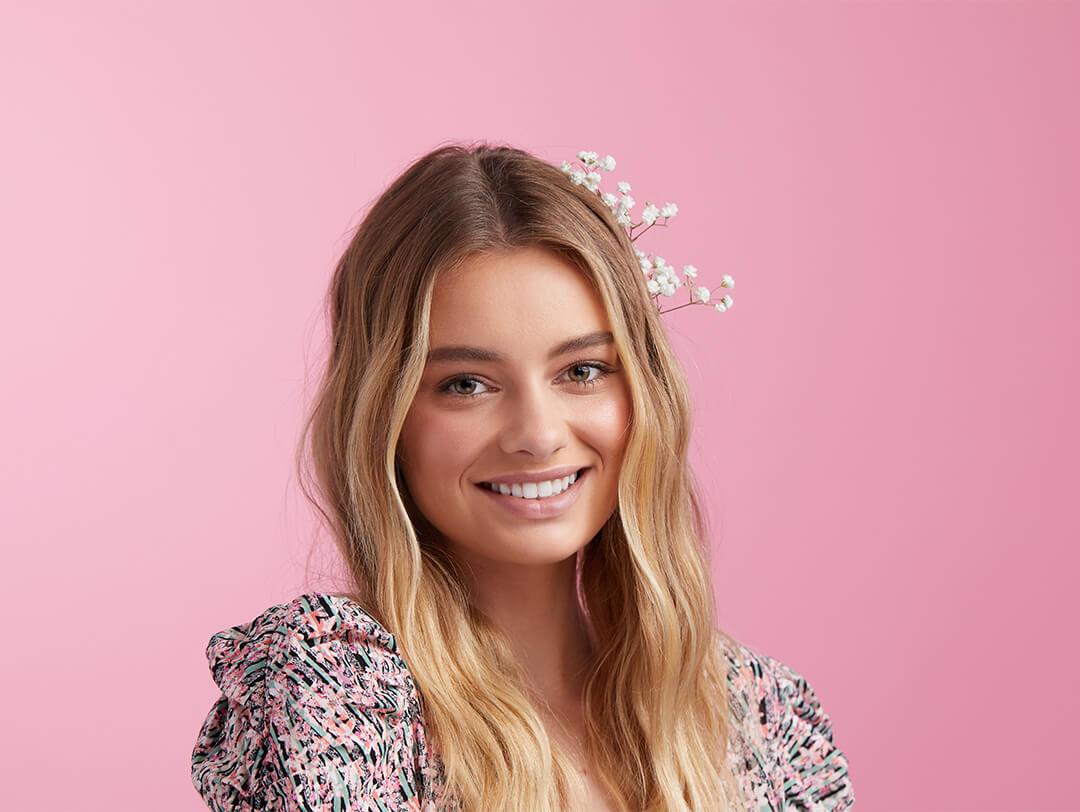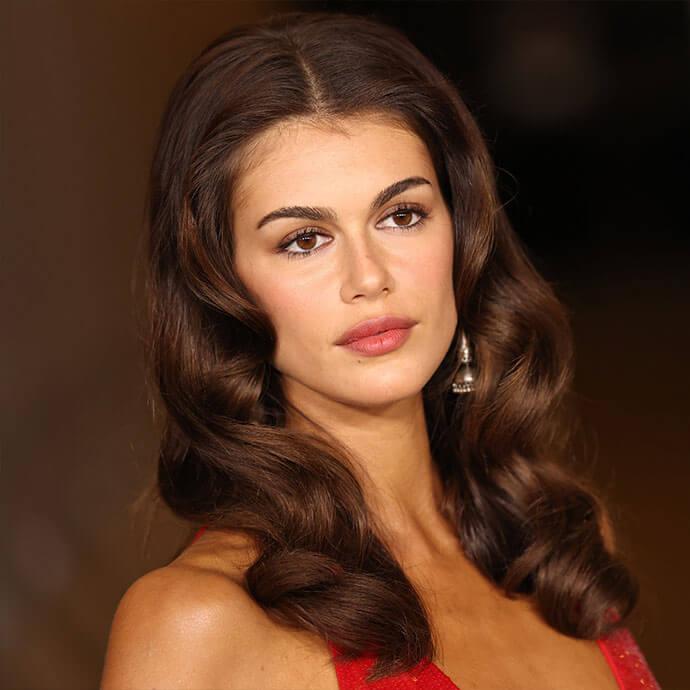Everything You Need To Know About Ombré Hair Color



Cortney Clift


Diving in the world of hair color can be both a thrilling and intimidating experience. On one hand, it's a fun way to change up your hairstyle–whether you're looking to go from brunette to platinum blonde or you just want to incorporate some subtle babylights. On the other hand, it can be damaging to your hair, it requires a lot of upkeep, and it's often expensive.
One technique that combats hair color's biggest downsides is the ombré technique. This hair color trend avoids pesky dark roots, works on every hair color, and is one of the most affordable hair color ideas available. Read on to learn all about what ombré hair is, what the biggest benefits are, and what sort of maintenance is required.


It's about glam time you treated yourself.
So, what is ombré exactly?
Unlike traditional foil highlights or all-over color, ombré is a gradient hair color technique that's typically darker at the roots and seamlessly transitions into a lighter shade at the ends. Madison Rae Garrett, a master colorist at NYC salon Spoke & Weal, describes the hair trend as a "two-toned color blend."
Typically, this hand painted highlighting technique leaves the natural color of the root and applies either lightener or bleach to the ends of the hair up to the mid-shaft, depending on how high you want the transition to go. After the ends have been lightened, your desired tone is added.
What’s the difference between balayage and ombré?
"Ombré is more of a color block. The top of the hair remains dark, and it blends into solid, lighter ends," Garrett explains. On the other hand, balayage hair is a lightening technique that offers hand painted, natural-looking highlights. (The word balayage comes from the French word for “sweep," which refers to the freehand method used to create this look.)
"Balayage is more of a natural sun-kissed look," Garrett says. It focuses on the top layer of the hair. The underside stays darker making the hair more dimensional." If it sounds like balayage might be more of your thing, read more about it here!
What are the benefits of ombré hair color?
While hair color is often a balance of pros and cons, the good seems to outweigh the bad when it comes to the ombré technique. Below are a few of the biggest benefits of the look.
1. It's low maintenance and budget-friendly.
The biggest advantage of ombré hair color is that the color doesn’t start all the way at the root. This means you can avoid that harsh root line that happens as color grows out. "Because you don’t have a line of demarcation, ombré requires little to no maintenance," Garrett explains. This means fewer touch-up visits and less money spent at the salon.
2. It's ideal for one-length haircuts.
If you tend to rock a simple one-length cut but want to spice things up with color, ombré is an ideal choice. "Ombré looks best on any single-layer hair length, from a bob to long hair," Garrett says. "Because it’s a color melt, you don’t want too many layers. This can cause a disconnect in the blend."
3. It can be subtle or dramatic.
The ombré technique works beautifully if you're mostly just looking to accentuate your natural color. It can easily look subtle if you choose to only go a few shades lighter at the ends. This natural look is sometimes referred to as "sombré," a softer, subtler version of the trend.
On the flip side, it's also a great low maintenance way to incorporate unconventional hair dye colors like purple or pink. Demarcation lines tend to be super dramatic with these kinds of colors when they're applied to the whole head, but using the ombré style will help avoid harsh roots and make touch-ups less frequent.
What should you consider before applying ombré to your hair?
There are two important things you'll need to decide before applying ombré hair color.
1. Your color gradient
First, figure out how dramatic you'd like your gradient to be. Most people will typically go two to three shades lighter than their natural hair color. Medium brunettes might try a caramel ombré while medium blondes might go almost platinum in their gradient. That being said, a more dramatic gradient is certainly an option.
2. The length of the gradient
Second, you'll need to decide how much of your hair you'd like to have lightened. Most of the time, the gradient starts towards the middle to lower third of the hair length. If more of your hair is given an ombré effect, it will likely require more maintenance.
If you're not sure where you'd like it to start, consult your stylist. They will definitely have some insight into what will look best.
How long does ombré hair color last?
Garrett says that ombré tends to last for about four to five months. You can help to keep your color looking fresh by not overwashing the hair and using sulfate-free shampoos and conditioners. If your hair is blonde, you can also use a purple shampoo, which helps to neutralize brassy and yellow tones. If the color becomes too dull or brassy for your liking, Garrett recommends returning to the salon for a gloss treatment. This will add shine and tone to the hair.
Can you do ombré hair color at home?
While it's certainly possible to achieve ombré hair color at home–there are even a few at-home kits out there–it's not something we'd really recommend. Anytime a lightener or bleach is involved, it's best to leave it to the professionals so that you don't overprocess your hair. Additionally, it requires expertise to create the seamless color gradient ombré hair is known for. If you don't manage to get this right, it could end up looking like a harsh color block halfway down your hair shaft.
Want in on all the Glam Bag fun? Take our Beauty Quiz now to get started. And don’t forget to check us out on Instagram and Twitter @IPSY.
Liked this post? Share!
Related Stories


Hair
6 Hair Trends Set to Take Over in 2026, From Bixie Cuts to Bouncy Blowouts
Published on Dec 5, 2025 • 5 min read


Hair
21 Easy Hairstyles to Enhance Your Natural Curls and Coils
Published on Dec 3, 2025 • 11 min read


Hair
The Ultimate Guide to Styling Short Hair
Published on Dec 1, 2025 • 11 min read


Hair
From Bangs to Blonde: The Hair Trends Taking Over 2025
Published on Dec 16, 2024 • 5 min read


Hair
Scalp Exfoliation Is the Key to Healthier Hair—Here’s How to Do It Correctly
Published on Nov 21, 2025 • 9 min read


Hair
The 10 Best Hair Masks and Conditioners to Promote Hair Growth
Published on Mar 11, 2024


Hair
20 Trendy Hairstyles That’ll Make You the Life of the (Holiday) Party
Published on Oct 15, 2025 • 9 min read


Hair
Easy Thanksgiving Hairstyles to Look Polished While You Feast
Published on Oct 2, 2025 • 6 min read


Beauty Picked Just for You
Get 5 products worth up to $70
Plus exclusive access to epic deals up to 80% off
Starting at just $14/month. Cancel anytime.